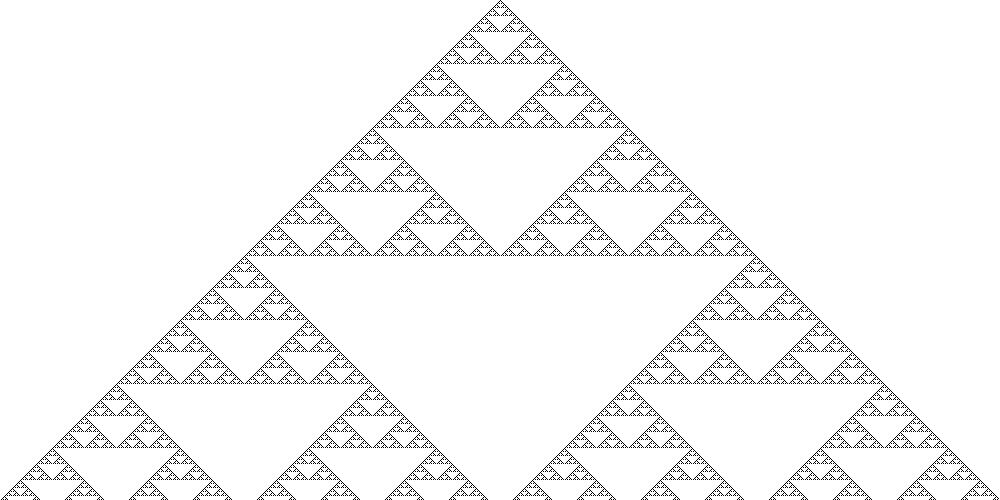I implemented some principles of elementary cellular automation in Java.
The program can generate a visualization of the plan. Example for the Rule 30 :

Here is the rule 90, generating a Sierpinski triangle :

So far I've implemented 4 rules ( see the code under src/main/java/be/max/rules) :
- Rule 30
- Rule 90
- Rule 110
- Rule 250
There are in total 256 rules possibles.
A list from Stanford University showing all 256 possibles rules
Things to do to go further with this project :
-
Create an interface for rules
-
Add others rules
-
Add it as a web service so a front-end can give a nice in-browser rendering:
- The web service is simply a controller that receives the parameter for the cellular automata (number of cells per row, number of rows/iterations, and the rule). It will return a JSON response containing the representation of the plan generated.
-
Make the front-end to render the plan with some JavaScript (frameworks to consider : D3.js, processing, P5.js, ...)